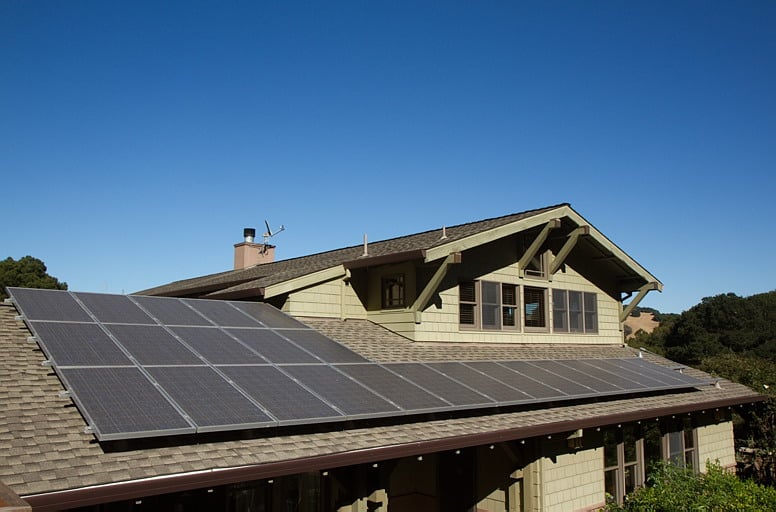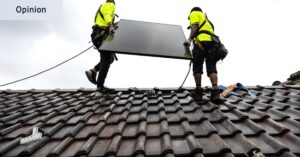What You Need to Know

Did you know that solar energy accounts for around 2.8% of all electricity generated in the United States?
When living off the grid or wanting to save money on energy bills, solar energy may be the way to go. However, you don’t want to spend much on solar panels only to realize your home can’t use the energy.
How do you know what direction to point your solar panels? Adjusting your panels for sunlight and panel orientation depends on where you live and how you plan to use your solar energy.
This article will point you in the right direction. Keep reading to get information about solar panel orientation.
Optimizing Sun Exposure
Sunlight and the orientation of your solar panels are essential factors to consider when optimizing sun exposure and designing systems that can produce enough energy to meet your electricity needs.
Sunlight is the energy source, so the more it is exposed to your solar panels, the better. Generally, you want the panels to be positioned where the sun is exposed most during the day.
Depending on the climate, this could be due south in the Northern Hemisphere or north in the Southern Hemisphere. For best results, the panels should be facing without shade and in an outward-sloping plane between 30 and 45 degrees.
It is also a good idea to use mounting hardware to adjust the solar panels during seasonal changes in the sun’s elevation and azimuth. The correct orientation of your solar panels and optimizing sun exposure play an essential role in energy production.
Utilizing Latitude & Longitude
Solar panels are most efficient when they face the sun at the correct angle. Utilizing latitude and longitude can help you determine the correct panel orientation. The northern Hemisphere’s tilt angle should equal the location’s latitude plus 15 degrees.
During the winter, this should be adjusted by subtracting 15 degrees while adding 15 degrees in the summer. It’s also essential to consider your home’s longitude. This will help you determine if you should slightly adjust the panel’s placement to the east or the west to dig into the sun’s path.
Setting up the best solar panel orientation makes sense for any homeowner using solar energy. This can increase its efficiency by as much as 10%. To do this properly, refer to a nautical or solar sunrise-sunset chart; the sun’s azimuth is the angle of sunlight.
Seasonal Considerations
It is essential to know that the amount of sunlight a solar panel can capture depends on the seasons. In the summer, the solar panel must be oriented toward the sun as much as possible when the sunlight is more intense and consistent. During the rest of the year, the orientation of solar panels should also be considered.
The intensity and duration of sunlight can increase or decrease over the year. The best way to orient a solar panel for optimal performance is to rotate it throughout the year. Always face the sun’s light at the most advantageous solar panel angles.
To ensure maximum efficiency and performance, periodic realignments of the solar panel for changing sunlight conditions should also be conducted.
Proper Orientation
Proper orientation of sunlight and solar panels is the key to optimizing efficiency. Knowing the optimal orientation for the solar panels and ensuring the sun is at the appropriate angle. It is to provide the highest energy production is very important.
Generally, the more direct sunlight strikes the solar cell, the more energy is produced. The ideal solar panel orientation actively tracks the sun to ensure maximal efficiency. For example, it moves across the sky with a motorized system or manual tracking.
Besides the direction the panels face, their tilt also affects the amount of energy captured. Tilting them at the same angle as your latitude provides the best results.
Properly orienting the panels in the right direction can significantly affect the system’s efficiency. This can save you money in the long run.
The Benefits
Sunlight and solar panel orientation can play a significant role in the overall efficiency of solar panel systems. Depending on where you live, the ideal direction for a solar panel to face is usually south. The benefits of it include:
Reduces Electricity Bills
The solar panels must be installed in the right direction to maximize the sunlight hitting them. The direction solar panels should face when installing is the south direction. This leads to increased efficiency and reduces the number of electricity bills.
It holds the most consistent and direct sunlight throughout the year. Solar panel orientation should also be considered regarding the pitch or the angle at which they are installed. It should be angled toward the equator of wherever you live.
Diverse Applications
It knows the basics of solar collection and the factors in designing a system. Solar panels must be placed under direct sunlight for maximum time to generate the most energy. This can help you install the most optimally efficient solar system.
Custom-angled mounting racks make this possible in almost any environment. Solar panels can convert the maximum amount of sunlight into sound energy. Once an efficient orientation has been established, solar panel systems can be used for a wide range of applications, such as:
- remote-area electricity
- water pumping
- heating, ventilation, and air conditioning
- street lighting
- cooking
Technology Development
Technology development has pushed the use of renewable energies to the forefront, and solar panel technology is at the top of the list. It’s best to install panels to face directly south due to the sun’s path as it arcs across the sky or adjusts them to your specific latitude to maximize efficiency.
Low Maintenance Costs
Solar panel orientation refers to the direction in which the panels are mounted and the angle at which they are set. Generally, the optimal exposure for solar panels is to face south in the United States, allowing for the best sunlight absorption.
Solar panels must be clear from excessive shading from trees or nearby buildings to effectively generate solar power. With the proper orientation of solar panels, homeowners can reap the rewards of solar energy with low maintenance costs.

Solar panels must face south in the Northern Hemisphere and north in the Southern Hemisphere, image source: Pixabay
Renewable Energy Source
Solar panels capture and store solar energy from the sun, turning it into usable power. Solar panel orientation is critical to maximizing solar panel efficiency and energy output. The ideal direction for a solar panel is to face the sun directly, without any obstacles blocking the sun’s rays.
The solar panel should also be installed on a roof at an angle that can track the sun’s path, which changes depending on the season. Furthermore, solar panels should be placed in an area with direct sunlight throughout the day.
Ensuring that solar panels are correctly positioned will help capture the most sunlight possible. This generates a dependable amount of energy.
To experience these benefits, check out more about solar energy.
Different Orientation Options
Azimuth-fixed orientation involves keeping the solar panel facing the same direction with seasonal spins. Polar orientation, facing directly toward the geographic poles, is the most efficient option as it allows for the most significant amount of sunlight across the day. This can be practical if no obstruction exists, such as trees or other buildings.
Lastly, dual-axis orientation, which is half a day on polar and half on azimuth-fixed, is the most complex setup. It is more expensive but is suitable for large-scale solar panel installations. All three options maximize solar energy harvest capabilities, depending on the specific climate and land formations present.
Impact of Shadows on Solar Panels
Sunlight is essential to the performance of a solar panel because it is a source of energy and helps to generate power. The impact of shadows on solar panels is quite significant. When the sun is blocked by a cloud, even partially, it can reduce the energy the solar panel receives.
To optimize energy production, the solar panels should be placed in the best orientation always to take in direct sunlight. The exposure during installation must consider the latitude, the time of day, and the direction of the shadows from nearby trees, buildings, or mountains that can affect the solar panel’s ability to gather sunlight.
Understanding the shadows in advance and adjusting the panels accordingly can provide cleaner, more consistent access to sunlight, significantly increasing output and power production.
Potential Risks
Data from real-time solar output monitoring systems should also be integrated when deciding the best orientation for your solar panels. It is essential to consider the risks associated with this approach. These risks include the potential for overheating, UV damage to the boards or solar site, and other potential damage from unpredictable environmental conditions.
This will ensure a relatively low-risk approach while providing the maximum energy production possible. It is essential to orient solar panel systems properly.
Understanding the Solar Panel Orientation
Sunlight is the backbone of solar energy generation, and panel orientation is critical. Proper alignment with the sun’s position is the key to the maximum efficiency of the solar panel system. The perfect solar panel orientation can yield the best return from your investment.
To learn more helpful tips, be sure to visit our site today!





